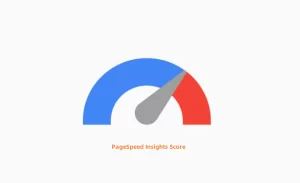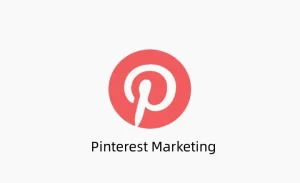Email marketing is a powerful tool that allows businesses to effectively communicate with their customers, nurture leads, and drive conversions.
In this blog post, Dolma will explore the fundamentals of email marketing, provide valuable tips and strategies, and highlight best practices to optimize your email campaigns for better results.

Table of Contents
- What is Email Marketing?
- Advantages of Email Marketing
- Disadvantages of Email Marketing
- 7 Types of Email Marketing Campaigns
- Creating a Successful Email Marketing Campaign
- 5 Biggest Email Marketing Challenges
- Tips to Grow Your Email List
- Conclusion
What is Email Marketing?
Email marketing is a digital marketing strategy that involves sending targeted messages and promotional content to new or future customers via email.
It allows businesses to communicate directly with their audience, build strong relationships, nurture leads, and sell their products and services.
Different types of businesses can leverage email marketing in various ways:
- eCommerce businesses can use email marketing to sell products, recover abandoned carts, and increase lifetime value.
- Small business owners can maintain brand awareness and build relationships over time.
- SaaS companies can generate leads and convert free trial users into paying customers through email marketing.
- Bloggers and publishers can drive traffic to their websites and monetize their content through affiliate links.
- Enterprise clients can scale their email marketing efforts to reach thousands or even millions of customers at once.
Before we delve into the details and strategies, let’s familiarize ourselves with some basic email marketing terms.
Advantages of Email Marketing
Email marketing offers numerous benefits that make it a powerful tool for businesses of all sizes.
Here are some of the key advantages:
- Ownership of Email List: Unlike other marketing channels where you rely on algorithms or platform policies, with email marketing, you own your email list. You have full control over who receives your messages and when.
- High Engagement: People check their email frequently, with an average of up to 20 times a day. This high engagement allows you to reach your audience directly and effectively.
- Automation and Scalability: With email marketing automation, you can set up workflows and sequences that send emails automatically based on specific triggers or actions. This automation saves time and allows you to scale your efforts, reaching a large audience without manual effort.
- Trackable and Measurable: Email marketing platforms provide detailed analytics and insights, allowing you to track metrics such as open rates, click-through rates, conversions, and more. This data helps you optimize your campaigns and make data-driven decisions.
- Personalization and Segmentation: Email marketing allows you to personalize your messages based on recipient data, such as their name, preferences, or purchase history. You can also segment your email list to send targeted messages to specific groups, increasing relevance and engagement.
- High ROI: Email marketing consistently delivers a high return on investment. According to studies, businesses can earn an average of $37 for every $1 spent on email marketing.
These advantages make email marketing an essential tool for businesses looking to drive engagement, build customer relationships, and increase revenue. However, it’s important to consider the potential disadvantages as well.
Disadvantages of Email Marketing
While email marketing offers numerous benefits, it’s essential to be aware of the potential challenges and drawbacks.
Here are some of the disadvantages:
- Deliverability and Compliance: Getting your emails into the recipient’s inbox and complying with email-related legislation can be challenging. Factors such as spam filters, email deliverability rates, and legal requirements can impact the success of your campaigns.
- Consent-based Channel: Email marketing requires the recipient’s consent to receive marketing emails. You can’t pay your way into someone’s inbox. This means you need to focus on building an engaged and opt-in email list.
- Competitive Landscape: Email marketing is a popular and effective strategy, which means you’ll face competition in the inbox. To stand out, you need to create compelling and engaging content that resonates with your audience.
- Technical Challenges: Small technical mistakes, such as incorrect formatting or broken links, can affect email deliverability and hinder your marketing efforts. It’s essential to regularly test and optimize your emails to ensure they display correctly across different devices and email clients.
- Costs: While there are free email service providers available, as your email list grows, you may need to invest in premium email marketing software or services. Costs can increase as your list size and email volume expand.
Understanding these potential challenges allows you to develop strategies to overcome them and maximize the effectiveness of your email marketing campaigns.
7 Types of Email Marketing Campaigns
Different types of email campaigns can maximize the impact of your email marketing. Here are seven essential types of email marketing campaigns you can implement:
Newsletter Emails
Newsletter emails are regular communications sent to subscribers on a weekly, monthly, or quarterly basis. They provide valuable content such as news, updates, tips, promotions, or curated information related to your business or industry.
Newsletters keep your audience engaged and informed, nurturing the relationship over time.
Welcome Emails
Welcome emails are sent to new subscribers or customers after they join your email list. Use these emails to introduce your brand, express gratitude, and provide valuable information or offers.
Welcome emails set the tone for your relationship with subscribers and can help establish trust and engagement from the start.
Confirmation Emails
Confirmation emails verify or confirm an action taken by the recipient, such as subscribing to a newsletter, registering for an event, or making a purchase.
These emails include details of the action and often provide additional instructions or information.
Promotional Emails
Promotional emails highlight new products, sales, or special events from your business. They create a sense of urgency and encourage recipients to take advantage of time-sensitive offers or discounts. Promotional emails are effective for driving immediate conversions and increasing revenue.
Lead Nurturing Emails
Lead nurturing emails are targeted at potential customers who have shown interest in your products or services but haven’t made a purchase.
These emails aim to build trust, provide additional information or resources, and address potential concerns or objections.
The goal is to guide leads through the buyer’s journey and ultimately drive conversions.
Transactional Emails
Account updates, order confirmations, shipping notifications, or password resets trigger transactional emails. These emails provide essential information related to the transaction and ensure a smooth customer experience.
Seasonal Marketing Emails
Seasonal marketing emails are tailored to specific seasons, holidays, or events. They often include special offers, promotions, or content related to the occasion.
Seasonal emails tap into the festive spirit and can drive engagement, sales, and customer loyalty.
By utilizing these different types of email campaigns, you can engage your audience, build relationships, and drive conversions effectively.
Creating a Successful Email Marketing Campaign

Now that you understand the fundamentals of email marketing and have built your email list, it’s time to create a successful email marketing campaign.
Here are some tips and best practices to take your campaigns from good to great.
Choosing a Relevant Email List
Sending your emails to the right people is crucial to maximizing their impact. Segmenting your email list allows you to target specific audience groups and create highly relevant content.
Consider factors such as location, demographics, and interests when segmenting your list.
Avoid unethical practices like buying email lists, as this can harm your engagement and conversion rates, as well as potentially lead to being blocked or marked as spam by email service providers.
Designing Your Email
Although content is crucial, the design of your email plays a significant role in engaging your audience.
Follow these tips to create an appealing and professional email design:
- Add white-space: Allow your email content to breathe by incorporating white space around text and visual elements. This ensures a clean and professional email design that is easy to read.
- Apply your branding: Add your logo, use your brand colors and fonts, and keep the design aligned with your visual brand identity.
- Establish visual hierarchy: Use alignment, varying font sizes, and other visual hierarchy principles to organize your email design elements.
- Make your emails responsive: Ensure your emails are optimized for both desktop and mobile devices. Avoid using large images that may not load properly on small screens or slow internet connections.
- Use images: Visual elements like images and GIFs make your emails more attractive and engaging. For example, a colorful header image can grab attention.
A well-designed email enhances the overall user experience and increases the likelihood of engagement.
Personalizing Your Email Subject Line and Content
Personalization is key to engaging your subscribers and making your emails feel more relevant and personal. Leverage subscriber data to tailor your email subject lines, content, or design to each contact.
Here are a few ways to personalize your emails:
- Mention the subscriber’s name in the subject line to grab attention.
- Use subscriber location to promote events or sales nearby.
- Send tailored product recommendations based on past purchases.
For example, Uncommon Goods sends personalized shopping suggestions to subscribers based on their browsing or purchase history.
Personalization can significantly increase open rates and click-through rates, leading to higher engagement and conversions.
Being Conversational
Consumers are tired of receiving overly sales messages from brands. To genuinely engage your subscribers and build relationships, adopt a friendly and conversational tone in your emails.
Treat your subscribers as individuals, and speak to them like you would a friend.
Keeping your emails approachable and conversational makes them feel more personal and relatable, leading to increased engagement and conversions.
Creating Follow-Ups
Sometimes, a single email is not enough to convert a prospect or nurture a lead. Creating follow-up emails allows you to continue engaging with your subscribers and guide them through the customer journey.
For example, an abandoned cart series can include multiple emails with reminders, discount coupons, and urgent notifications to encourage cart abandoners to complete their purchase.
To avoid being marked as spam or unsubscribed, space out your follow-up emails and limit the number of emails you send.
Sending Emails from a Real Person
Avoid sending emails from generic email addresses like “no-reply@yourbusiness.com.” Instead, use recognizable sender names to ensure your emails land in your subscribers’ inboxes and sound less like automated messages.
To create a personal connection with your subscribers, consider using the name of someone from your business, such as the founder or marketing manager.
A/B Testing Your Emails
A one-size-fits-all approach to email marketing is not appropriate for every audience. A/B testing allows you to experiment with different versions of your emails and determine which performs better.
By sending two different versions of your email to a small percentage of your audience and analyzing the results, you can make data-driven decisions about the content, design, subject lines, and CTAs of your emails.
This ensures that you are delivering the most effective messages to your subscribers.
A/B testing not only improves the performance of your email campaigns but also provides valuable insights into your audience’s preferences and behaviors.
Following Email or Spam Regulations
Following email and spam regulations is crucial to maintaining a positive sender reputation and ensuring your emails reach the inbox.
Ignoring these regulations can lead to being marked as spam or even facing legal consequences.
Key guidelines to follow include:
- Avoid buying email lists.
- Only add subscribers who have explicitly opted in to receive your emails.
- Provide clear privacy policy information.
- Make it easy for subscribers to unsubscribe and honor opt-outs.
- Avoid using deceptive language or misleading subject lines.
- Provide your mailing address in your emails.
Maintain a positive email deliverability rate by adhering to these regulations.
Tracking the Success of Your Email Campaigns
One of the significant advantages of email marketing is the ability to track and measure the success of your campaigns. Most email marketing tools provide in-depth analytics and dashboards to help you understand the effectiveness of your emails.
Key metrics to track include:
- Click-through rate: The average number of times subscribers click on links or CTAs in your emails. This metric indicates email engagement.
- Open rate: The average number of opens your emails receive. Open rates help you analyze the effectiveness of subject lines, sender names, and pre-header text.
- Spam complaints: The number of times your emails have been marked as spam. This can result from spammy subject lines, irrelevant content, unsolicited emails, or technical issues.
- Unsubscribes: The number of people who unsubscribe from your email list. High unsubscribe rates may indicate irrelevant content or a mismatch between your emails and your audience.
- Bounce rate: The percentage of contacts who did not receive your email. A high bounce rate may indicate inactive or outdated contacts or issues with your email service provider.
Other email metrics include conversion rates, most visited pages, best-performing links, mobile open rates, revenue per email, and more. Align your metrics with your email marketing goals to focus on the most important ones that illustrate what’s working and what’s not.
By tracking the success of your email campaigns, you can continuously improve your strategies and optimize your results.
5 Biggest Email Marketing Challenges
While email marketing can be highly effective, it’s not without its challenges. Here are five common challenges you may face and strategies to overcome them:
How to Ensure Email Deliverability
Ensuring that your emails reach the recipient’s inbox can be challenging due to spam filters and other deliverability issues.
Here’s how you can improve email deliverability:
- Regularly clean your email list to remove inactive or invalid email addresses.
- Avoid spam trigger words and phrases in your subject lines and content.
- Provide ways for subscribers to manage their subscriptions to reduce unsubscribes and spam reports.
- Segment your email list to send targeted and relevant content to specific groups.
Learn the basics of email marketing and discover effective strategies to grow your business. Start building successful email campaigns today.
How to Boost Email Conversion Rates
Converting email recipients into customers or taking desired actions can be a hurdle. To boost email conversion rates, consider the following tactics:
- Use dynamic content to deliver tailored messages based on recipients’ preferences or past interactions.
- Segment your email list to send personalized and targeted content.
- Provide clear and compelling CTAs that guide recipients toward the desired action.
- Create urgency or scarcity in your offers to encourage immediate action.
- A/B tests your email campaigns to identify the most effective subject lines, content variations, CTAs, or email templates.
Learn the basics of email marketing and discover effective strategies to grow your business. Start building successful email campaigns today.
How to Scale Your Email Marketing Efforts
You may find it challenging to manage and scale your email marketing efforts as your email list and campaigns grow.
Here are some strategies to help you scale effectively:
- Set up workflows and sequences that automatically send emails based on triggers or actions provided by your email provider.
- Use email marketing tools, such as OptinMonster, to create high-converting optin forms without the need for coding or design skills.
- Regularly analyze your email metrics to identify areas for improvement and optimize your campaigns.
- Continuously test and refine your email marketing strategies to ensure scalability and effectiveness.
By addressing these common challenges head-on, you can overcome obstacles and achieve success with your email marketing campaigns.
Tips to Grow Your Email List

Leverage Social Media
Social media platforms provide a great opportunity to expand your email list. Promote your lead magnet through engaging posts, videos, or live sessions that highlight its value.
Provide your audience with a direct link to your opt-in form or offer exclusive content to encourage them to subscribe.
Optimize Your Website for Conversions
To grow your email list, you need to optimize your website for conversions. Place opt-in forms strategically throughout your site, such as in the sidebar, footer, or within relevant blog posts.
Offer a clear incentive for subscribing, such as a free ebook, a discount, or access to exclusive content. Make sure your opt-in forms are easy to fill out and visually appealing.
Collaborate with Influencers
Partnering with influencers in your industry can help you reach a wider audience and gain more subscribers. Identify influencers who align with your brand values and have a significant following.
Offer them exclusive access to your lead magnet or collaborate on a joint webinar or giveaway. The exposure from influencers can significantly boost your email list growth.
Conclusion
Email marketing is a powerful digital marketing strategy that allows businesses to communicate directly with their audience, nurture leads, and drive revenue.
By following the steps outlined in this guide, you can successfully launch and optimize your email marketing campaigns.
Leverage the various types of email campaigns to deliver personalized and targeted content that resonates with your audience. As you embark on your email marketing journey, always prioritize providing value to your subscribers, building trust, and maintaining a strong relationship with your audience.
With dedication, creativity, and the right strategies, email marketing can become a key driver of success for your business.
Embrace the power of email marketing and unlock the full potential of your business today!
Posts you may be interested in:


